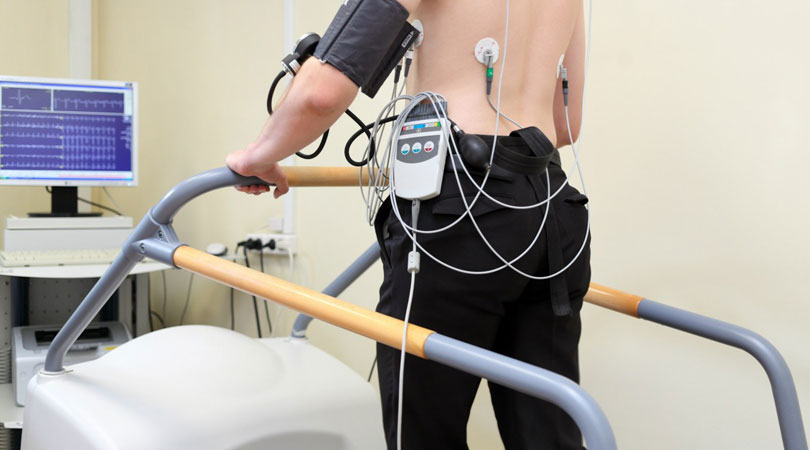
What is an Exercise Stress Test?
An exercise stress test is used to determine how well your heart responds during times when it’s working its hardest.
During the test, you’ll be asked to exercise — typically on a treadmill — while you’re hooked up to an electrocardiogram (EKG) machine. This allows your doctor to monitor your heart rate.
The exercise stress test is also referred to as an exercise test or treadmill test.
An exercise stress test is primarily used to help your doctor determine if your heart receives enough oxygen and proper blood flow when it needs it most, such as when you are exercising.
It can be ordered for people who have been experiencing chest pains or other symptoms of coronary heart disease (also called coronary artery disease).
An exercise stress test may also be used to help determine your level of health, especially if you are starting a new exercise program. This allows your doctor to learn what level of exercise you can safely handle.
If you are a smoker over 40 years old, or if you have other risk factors for heart disease, you should talk to your doctor to see if an exercise stress test is a good idea for you.
Stress tests are generally considered safe, especially since they’re done in a controlled environment under the supervision of a trained medical professional.
However, there are some rare risks, such as:
- Chest pain
- Collapsing
- Fainting
- Heart attack
- Irregular heartbeat
However, your risk of experiencing these reactions during the test is low, since your doctor will screen you for problems beforehand. People who run the risk of these complications — such as those with advanced coronary heart disease — are rarely asked to do the test.
Prior to your test, your doctor will perform a physical exam and ask about your complete medical history. At this point, tell your doctor about your symptoms, especially any chest pains or shortness of breath.
You should also tell your doctor about any conditions or symptoms that may make exercising difficult, such as stiff joints from arthritis.
Finally, let your doctor know if you have diabetes, because exercise affects blood sugar. If you do have diabetes, your doctor may want to monitor your blood glucose levels during the exercise test as well.
The day of the test, be sure to dress in loose, comfortable clothing. Something that is light and breathable is best. Make sure to wear comfortable shoes, such as athletic sneakers.
Your doctor will give you complete instructions about how to prepare. These instructions might include:
- Avoid eating, smoking, or drinking caffeinated beverages for three hours before the test.
- Stop taking certain medications.
- Report any chest pains or other complications you notice on the day of the test.
You should only stop taking medications if your doctor tells you to do so.
Before you begin exercising, you’ll be hooked up to the EKG machine. Several sticky pads will be attached to your skin under your clothes. Your doctor or nurse will check your heart rate and breathing before you begin exercising. Your doctor may also have you breathe into a tube to test the strength of your lungs.
You’ll start off by walking slowly on a treadmill. The speed and grade of the treadmill will be increased as the test continues.
If you experience any difficulties — especially, chest pains, weakness, or fatigue — you may ask to stop the test.
When your doctor is satisfied with your results, you’ll be able to stop exercising. Your heart rate and breathing will continue to be monitored for a short while afterward.
After the test, you’ll be given water and asked to rest. If your blood pressure rises during the test, your attending nurse may continue to monitor your blood pressure.
A few days after the test, your doctor will review the results with you. The test could reveal irregular heart rhythms or other symptoms that indicate coronary artery disease, such as blocked arteries.
If your doctor determines you may have coronary artery disease or other heart problems, they may begin treatments or order more tests, such as a nuclear stress test.



